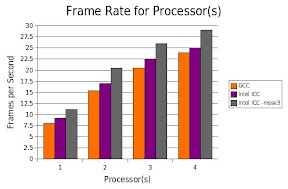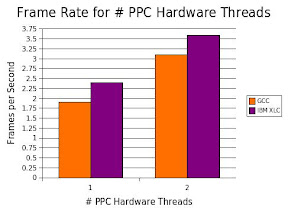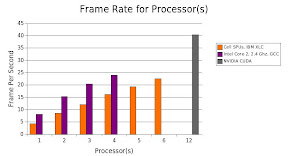
Monday, July 16, 2007
Intel C++ Compiler
I recompiled my generic Ray Tracer code using the Intel C++ compiler. Using SSE3 auto-vectorization I obtained a 21% speedup over GCC.


Wednesday, July 4, 2007
Cell PPC Hardware Threads
The PowerPC unit in the PS3 Cell processor supports two hardware threads. Earlier I added pthread support to the generic ray tracer code. I have updated Real-Time Ray Tracing on the Playstation 3 Cell Processor with PPC performance measurements with pthreads and the IBM XLC compiler. Pthreads gives a 63% speedup, and XLC gives a 26% speedup, and together they give an 89% speedup:


Sunday, July 1, 2007
CUDA GPGPU and Pthreads
I've added a new page, Real-Time Ray Tracing with NVIDIA CUDA GPGPU and Intel Quad-Core. I've created two new versions of the ray-tracer code, one utilizing NVIDIA CUDA, and another using pthreads to exercise multi-core CPUs. The CUDA code is fastest, but least realistic as a practical ray-tracer. Pthreads was certainly easiest -- a half hour change to pre-existing generic code. I think CUDA will perform much better on more constrained (in terms of control flow and random memory access) algorithms.


Subscribe to:
Comments (Atom)